Header logo
header top contact widget
All-On-4
Achieve Smile Goals With A Periodontist
Posted on Dec 11, 2023 by William J. Claiborne, DDS MS
If you’re like me, I’m usually looking at the end of each year feeling like there are several things I wanted to accomplish for the year, but kept putting them off until I ran out of time.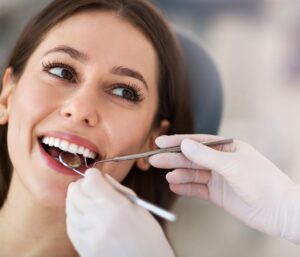
For some people, their oral health and appearance goals are on this list, with some who keep moving the goals to the next year and the next. These goals may include:
• Improving the appearance of a smile
• Having a “cleaner” mouth with fresh breath, etc.
• Replacing missing teeth
• Getting past fear or anxiety of dental visits
If you have one of these on your list, you may be surprised that a periodontal specialist can play a major role in helping you achieve your goals. And, because of the advanced skill level of a periodontist, your comfort, time in treatment and overall results can make the process easier for you.
Many general dentists and other dental specialists refer their patients to a for their specific skills. A periodontist is a dental specialist who is the expert in caring for the gum tissues in your mouth and in the placement of dental implants.
The majority of patients arrive because of periodontal (gum) disease. Common symptoms are red, swollen and tender gums. It often causes gum that bleed easily (often noticed when brushing teeth) and persistent bad breath.
Gum disease (sometimes referred to as ‘perio’ disease) only worsens without treatment. It is the leading cause of adult tooth loss. Additionally, it has been linked to the development or worsening of a long list of serious health problems elsewhere in the body.
Because the inflammatory bacteria disease can enter the bloodstream through diseased gums, their presence can activate conditions that are seemingly unrelated to oral health. Yet, the connection is severe. These health problems include stroke, heart attack, Alzheimer’s disease, dementia, preterm babies, some cancers, arthritis, diabetes, and erectile dysfunction (ED).
In our Asheville periodontal dental office, we are able to treat all stages of gum disease to restore your oral health and minimize the risk of tooth loss. For those who have developed gum disease because they’ve been afraid of dental visits, we offer oral and IV sedation (“twilight sleep”).
Sedation is administered safely by a doctor in anesthesia who uses advanced safety equipment. Our priority is always patient comfort with their safety equally so.
Too, our advanced technology is able to minimize treatment time with amazing results. For example, LANAP (Laser-Assisted New Attachment Procedure) combined with PERIOLASE MVP-7 is designed to efficiently and effectively treat periodontitis (advanced gum disease) with the advantages of a dental laser. This offers non-surgical treatment for patients with moderate to severe periodontal disease. LANAP treatment minimizes discomfort and has a quick recovery time. It has also been found to stimulate bone regrowth in damaged areas.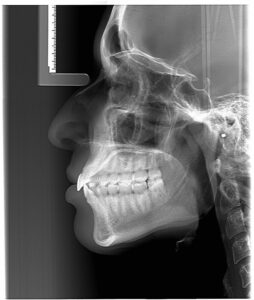
When tooth loss has occurred (whether from gum disease, an accident, or due to genetics), our NW NC dental specialty office also works with a number of dentists in the diagnosis and placement of dental implants.
With over 40 different implant systems, the one suited best for you depends on factors that an experienced dentist must take into consideration. For example, the number of implants you need and how much jaw bone mass exists.
For individuals who have lost a great deal of bone, specific implant types may be recommended. Some, like the “All On 4” implant system, uses specially designed implants which are placed at specific angles.
Bone loss can also be overcome by incorporating a bone rebuilding process into treatment. This is done prior to implant placement and does not require a bone graft. In many cases, we can apply a bone rebuilding material that restores ample bone mass.
The same is true when the sinus cavity will be too close to the proximity. This can be remedied through a “sinus lift.” We provide complete services of these procedures as well as dental implant placement – all performed with advanced skills and technology, such as our Cone Beam 3D imaging.
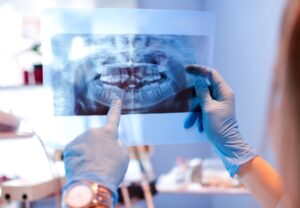 These images are ideal in diagnosis and treatment planning by giving a clear view of the mandible and maxilla (upper and lower jaw). Cone beam radiographs provide images in sagittal, axial, and coronal planes. This makes it possible to locate and trace the mandibular nerve canal for pre-surgical planning for an ideal implant position. Patients are exposed to only minute levels of radiation through a process that is fast and comfortable.
These images are ideal in diagnosis and treatment planning by giving a clear view of the mandible and maxilla (upper and lower jaw). Cone beam radiographs provide images in sagittal, axial, and coronal planes. This makes it possible to locate and trace the mandibular nerve canal for pre-surgical planning for an ideal implant position. Patients are exposed to only minute levels of radiation through a process that is fast and comfortable.
When the enhanced appearance of a smile is being sought, a periodontist also plays a part in helping to create a balanced smile line. In the procedure known as “crown lengthening,” the arch of gum tissues over teeth visible in a smile can be repositioned. This is done in a procedure known as a gingivectomy.
A gingivectomy is also performed to repair a “gummy smile.” This is when too much gum tissue shows above the teeth most visible in a smile. While the condition is not detrimental to oral health, some individuals seek to have it corrected by a periodontist.
Get the coming year started with your smile goals achieved! Call our Asheville periodontal dental office to schedule a consultation. Our friendly staff can help you arrange this private time together by calling 828-274-9440.
Common Contributors to Tooth Loss
Posted on Sep 11, 2023 by William J. Claiborne, DDS MS
Our natural teeth seem hard and solid, able to endure much over the span of a lifetime. However, as we all know, teeth can be knocked out due to accidents or injury and lost due to becoming overly decayed, fractured, infected and – the leading cause – periodontal (gum) disease.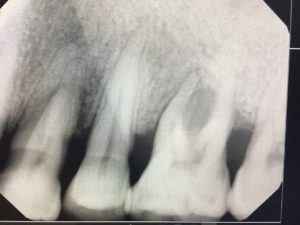
Your gum tissues serve as protection for the tooth structures you cannot see – the tooth roots and bone and tissues supporting the roots. And, teeth need these bone structures to stay healthy and vice versa; the bone structures beneath the gums need the presence of the roots to stay healthy.
The jaw bones are kept healthy by tooth roots that provide stimulation to the bone as well as nourishment that runs through the tooth’s interior.
When a tooth is removed, so is the stimulation and nourishment to that area of the jaw bone. Without it, the bone begins to shrink. As it declines in height, adjacent teeth are more vulnerable to loss. Statistics show that teeth adjacent to areas where natural teeth are missing will be the most likely to be lost next.
According to the Center for Disease Control & Prevention (CDC), 69% of adults between ages 35 – 44 have lost at least one permanent tooth. By age 50, Americans are missing an average of 12 teeth. For adults between the ages of 65 – 74, 26% are missing all of their natural teeth. That’s over one-fourth of the adult population over age 65.
Because of the strength and seemingly rock-solid presence of teeth, it may be assumed they’ll last for a lifetime. And, they can. Natural teeth can and should last a lifetime with proper maintenance and care. However, certain things can contribute to tooth loss; some of these may not be well known.
These include:
GUM DISEASE – Signs and symptoms of gum disease are:
• Red, swollen or tender gums
• Seeing blood in the sink when brushing
• Receded gums
• Loose or separating teeth
• Pus pockets on gum tissues
• Sores in the mouth
• Persistent bad breath
When these indications exist, it is important to seek periodontal treatment as soon as possible. Gum disease only worsens without treatment, requiring more time and expense to rid this serious, even deadly, inflammatory disease.
 NOT FLOSSING – While tooth brushing helps to keep oral bacteria levels in the mouth to manageable levels, daily flossing is also recommended as a preventative way to keep cavities and gum disease at bay. Still, 70% of the American adult population do not floss daily. Even worse, about a third of Americans admit to never flossing (39% of men and 27% of women who do not).
NOT FLOSSING – While tooth brushing helps to keep oral bacteria levels in the mouth to manageable levels, daily flossing is also recommended as a preventative way to keep cavities and gum disease at bay. Still, 70% of the American adult population do not floss daily. Even worse, about a third of Americans admit to never flossing (39% of men and 27% of women who do not).
SMOKING – According to the Centers for Disease Control & Prevention (CDC), a smoker has twice the risk for gum disease compared with that of a nonsmoker. (https://www.cdc.gov/tobacco/campaign/tips/diseases/periodontal-gum-disease.html)
AGING – With age, the body becomes less efficient in maintaining itself. Due to hormone changes and being less hydrated, joints wear down, skin loses subtlety and muscle mass and strength declines. The same is true with teeth, especially as gum tissues dry out. This means their tight, protective grip around the base of teeth loosens and pockets can easily for between teeth. All these factors contributor to higher risks of gum disease and tooth loss.
ORAL DRYNESS – The tissues inside the mouth need to be kept moist. Saliva flow is designed to do this. However, with age, the flow of saliva is less plentiful. Just as the skin and hair get drier with age, the mouth endures this same consequence. When saliva flow is less efficient at rinsing bacteria from the oral cavity (inside of the mouth), bacteria grow at a more rapid rate. This means bacteria accumulation occurs more frequently than twice-a-day brushing can control.
MEDICATIONS – The average adult in the 65-79 age group has over 27 prescriptions filled each year. (https://www.statista.com/statistics/315476/prescriptions-in-us-per-capita-by-age-group/). Many meds have the side effect of oral dryness or increased bleeding, including some herbal supplements. For example, Ginkgo Biloba and Vitamin E can act as blood thinners. When combined with aspirin, the combination may cause difficulties in blood clotting.
To halt the potential for tooth loss if you are already missing teeth, dental implants are recommended. They actually protect the health of neighboring teeth. In addition to helping the supportive bone structures retain bone mass, teeth supported by implants do not rely on the support of crowned (or ‘capped’) teeth on both sides. This means the integrity of adjacent teeth is preserved.
Dental implants come in over 40 different types designed to accommodate various challenges and preferences. This is one reason (of many) that a periodontist is an ideal choice for the diagnosis and placement of your implants. Our speciality understands the complete spectrum of implant systems. While some implant systems may be ideal for your needs, others may not. And, the choice of which will achieve your goals is not limited to just those types a non-specialist knows how to place.
For example, some dental implants provide you with a non-removable (“fixed”) option while others may involve removable teeth. Additionally, the proper selection of your dental implants may greatly save you in treatment fees.
For example, the All-On-4 dental implant system needs only 4 implants per arch, and can be placed in shallow bone. The treatment fees are less since the number of implants is low and the need for bone regeneration for severe bone loss may not be required. For these reasons, a periodontist may be able to help you achieve your tooth replacement goals within a budget you can manage.
Our Western NC periodontal dental office features some of the industry’s most advanced technology, which helps to optimize success rates, shorten treatment time, and enhance comfort. This includes 3-D Cone Beam imaging, which is ideal for diagnoses and treatment planning. These amazing images provide a clear view of the upper and lower jaw (including nerve canals) in a process that is quick, painless and at minimal radiation levels.
We also have a computerized Dental Implant Placement system for pre-surgical positioning of dental implants. Using a 3D model of the patient’s jaw, a template is developed for the most conservative treatment process needed, even for complex cases. This minimizes disruption of gum tissues and targets implant placement at ideal depths and angles.
Because we make patient comfort one of our highest priorities, we offer several sedation options, including oral and IV sedation. Oral sedation is a pill that helps patients relax. It also has an amnesiac effect, leaving most with little or no memory of treatment afterward. I.V. sedation (also known as “twilight sleep”) places the patient in a deeper sleep state and erases memory of the procedure. It is administered by a Medical Doctor (MD) who is a board certified Anesthesiologist.
If you have lost teeth (or struggle with a denture or partial) and are considering dental implants, begin with a consultation appointment. Call 828-274-9440. New patients are always welcome.
Six Reasons To Have Your Dental Implants Placed By A Periodontist
Posted on Jul 12, 2023 by William J. Claiborne, DDS MS
A periodontist is a dental specialist who is often in the background of various dental procedures. Yet, we are in the forefront when it comes to specialized skills that support specific treatment needs.
 Most patients are referred to our Asheville periodontal dental office by general dentists and dental specialists to provide certain aspects of dental treatment, which may involve our skills in cosmetic dentistry, dental implants, and treating all stages of gum disease.
Most patients are referred to our Asheville periodontal dental office by general dentists and dental specialists to provide certain aspects of dental treatment, which may involve our skills in cosmetic dentistry, dental implants, and treating all stages of gum disease.
A periodontist has advanced training to properly diagnose and treat all stages of periodontal (gum) disease (including gingivitis and periodontitis) as well as placement of dental implants. In addition, periodontists are particularly skilled in performing cosmetic periodontal procedures to repair gum-related disparities such as a “gummy smile” or varying gum arches that “jumble” a smile line.
A periodontist receives an additional 3 years of training after 4 years of undergraduate school and 4 years of dental school. This long, rigorous pursuit of the periodontal specialty requires the individual to be highly committed to the advanced care he or she will provide. It is our goal to help people achieve good oral health, a confident smile they love to share, and prevent tooth loss that can result from diseases of the gums.
Dental implants are now seen as the preferred option for tooth replacement. They come in over 40 different types designed to accommodate various challenges and preferences. But, why should you have your dental implants chosen and placed by a periodontist? After all, some dentists perform this in addition to their general dentistry services.
Below are 6 reasons our dental implant patients have particular advantages…
(1). With specialized skills, a periodontist is especially respectful to oral tissues as sensitive layers that have an important role in the appearance of a smile and the health of teeth. Utilizing these skills, a periodontist can help to minimize incisions while effectively treating each area in the mouth.
(2). Rather than be limited to just one or two dental implant systems that were taught in a “crash course” by the implant manufacturers, our speciality understands the complete spectrum of implant systems. Some may be ideal for your needs while others may not. Some provide you with a non-removable (“fixed”) option while others may involve removable teeth. Our specialized skills give you the best choices you should have.
(3). Additionally, the proper selection of your dental implants may greatly save you in treatment fees. For example, the All-On-4 dental implant system needs only 4 implants per arch, and can be placed in shallow bone. The treatment fees are less since the number of implants is low and the need for bone regeneration for severe bone loss may not be required. For these reasons, a periodontist may be able to help you achieve your tooth replacement goals within a budget you can manage.
(4). In our Western NC periodontal dental office, our advanced technology includes 3-D Cone Beam Imaging. This is ideal for diagnoses and treatment planning through images that provide a clear view of the upper and lower jaw (including nerve canals), with rotations that show sagittal, axial, and coronal planes. The imaging process is quick, painless and at minimal radiation levels.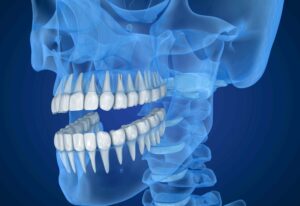
(5). Another feature is our Computerized Dental Implant Placement system. This advanced technology is designed for pre-surgical positioning of dental implants that uses a 3D model of the patient’s jaw. Once the implant type is selected, a template is developed for optimal treatment success, even for complex cases. This minimizes disruption of gum tissues and targets implant placement at ideal depths and angles. Thus, treatment success rates are higher with faster (and more comfortable) healing time.
(6). Optimal comfort for our patients has always been a priority. For many, a desired level of comfort and relaxation includes sedation options. Here, we offer several sedation options, including oral and IV sedation.
Oral sedation is a pill that helps patients relax. It also has an amnesiac effect, leaving most with little or no memory of treatment afterward. IV sedation (also known as “twilight sleep”) places the patient in a deeper sleep state and erases memory of the procedure. It is administered by a Medical Doctor (MD) who is a board certified Anesthesiologist.
With both sedation options, patients are closely monitored with advanced safety equipment throughout treatment.
If you are considering dental implants, you may wish to begin with a consultation appointment. During this time, we can explain the vast difference in comfort, treatment time, and success available through our specialized skills and extensive technology.
Call 828-274-9440 to schedule. New patients are always welcome and a referral is not always required.
Avoid An Aged Appearance By Keeping Facial Bone Structures Healthy
Posted on Jun 21, 2023 by William J. Claiborne, DDS MS
The aging process can, unfortunately, take quite a toll on appearance. Shoulders may slump, waistlines may widen, and hair may turn gray. As a periodontist in Western NC, I see another telltale sign of aging – resorption. This is the process of bone loss when natural tooth roots are missing from the jaw bones. Facial features affected by resorption can reveal quite a lot, and not in a flattering light.
A natural tooth is held by the upper or lower jaw bone by its roots. Around the base of each tooth, gum tissues wrap snugly to prevent entry of bacteria and protect sensitive tooth roots. These roots help to keep the tooth ‘alive’ by supplying blood and other nutrients to the bone supporting the tooth. Through the presence of these roots, the jaw bones also receive valuable stimulation, which helps the bone retain its mass.
Losing a tooth can trigger a domino effect, of sorts. Statistics show that tooth loss is most likely to occur in an area next to that of a missing tooth. Without the stimulation of tooth roots, the bone in that area will begin to resorb, or shrink in mass. This increases risks for adjacent teeth.
The process of resorption begins slowly the first year. However, the rate of bone loss accelerates more and more each year. For people who wear a denture or partial, the pressure of wearing these appliances can speed up the rate bone loss even more. Eventually, facial features change due to the declining bone structure, changes that tend to age one’s appearance far beyond their actual age.
Initially, the changes may be subtle, such as deep wrinkles around the mouth. The corners of the mouth begin to turn downward, even when smiling. Jowls form as facial muscles detach from shrinking bone structures. As the bone declines further, the chin becomes more pointed and the mouth seems to collapse into the face. The chin moves closer to the nose, creating what’s referred to as a ‘granny look.’
Dental function also takes a hit when it comes to tooth loss. The strength of the bite becomes challenged. Jaw bone breaks are more likely. Wearing a denture or partial becomes challenging due to its declining ‘ridge’ that is relied upon for support. Dental prosthetics begin to slip while eating, or even speaking. Eventually, frequent applications of denture pastes and adhesives are needed. After a time, even relines help very little.
As a periodontal specialist, one of my advanced skills (in addition to the treatment of all stages of gum disease) is in the diagnosis and placement of dental implants. For adults who are missing one or more natural teeth, we recommend dental implants for a number of reasons.
Why should you have your dental implants placed by a periodontist?
There are over 40 different implant systems, each designed to accommodate various needs and goals. For example, one consideration in determining the type of dental implant is in the assessment of jaw bone mass.
An implant needs a particular amount of bone structure to support it. After several years of missing tooth roots, the amount of existing bone may eliminate some types of dental implants or indicate the need for additional procedures prior to placement.
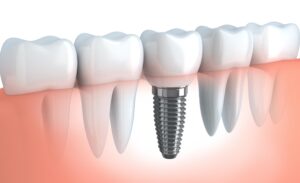
With adequate bone mass to support the implant(s), the choice of implant can be made based upon your needs and preferences. Without the necessary bone mass, we may advise a bone rebuilding process prior to implant placement. Typically, this does not require a bone graft. In many cases, we are able to apply a bone rebuilding material that regenerates ample bone mass. Or, we may advise an implant system that uses unique implant lengths and placement angles (the “All-On-4”) that can function dependably in minimal bone.
The benefits of dental implants are many. These include:
A lifetime solution – When properly selected and placed, dental implants are designed to last a lifetime. This is why a periodontist is an ideal choice for your selection and placement.
A healthy choice for remaining teeth – Although each natural tooth seems to “stand alone”, individually, they provide support for the teeth on each side and the one above or below. This helps to keep teeth in their proper positions. However, dental implants provide stimulation to the bone to help retain bone mass. And, teeth supported by implants do not rely on the support of crowned (or ‘capped’) teeth on both sides. Thus, preserving the integrity of adjacent teeth.
Restoring biting and chewing stability – Because dental implants are anchored by the jaw bone, biting and chewing stability is restored. People who have dental implants are able to eat healthy, fibrous, and chewy foods once avoided due to ill-fitting dentures or partials.
The feel of your “own teeth” – Rather than have clunky dental prosthetics in your mouth, dental implants act like your own teeth. You can brush them in your mouth and eat foods you love and laugh with friends. Unlike dentures or partials, no more sore spots rubbed on tender gum tissues and no more piercing seeds caught between the gums and denture base.
A wise investment – Dental implants, unlike crown-&-bridge, dentures or partials, will not break, develop a cavity, require periodic “relines,” or need a root canal. Made of titanium, an implant will last your lifetime without requiring the upkeep of other types of restorative options.
In our Asheville periodontal dental office, we offer some of the most advanced dental technology available. This allows our patients to enjoy optimal comfort with minimal treatment time. We are also committed to patient comfort through oral and I.V. sedation (“twilight sleep”). These are administered safely with continual monitoring by trained team members.
If you are considering dental implants to replace missing teeth, begin with a consultation appointment. This will take place in a private room where we can discuss your needs and concerns. Call 828-274-9440 to schedule, or tap here for contact information.
Recent Posts
Categories
Archives
- September 2024
- August 2024
- July 2024
- June 2024
- May 2024
- April 2024
- March 2024
- February 2024
- January 2024
- December 2023
- November 2023
- October 2023
- September 2023
- August 2023
- July 2023
- June 2023
- May 2023
- April 2023
- March 2023
- February 2023
- January 2023
- December 2022
- November 2022
- October 2022
- September 2022
- August 2022
- July 2022
- June 2022
- May 2022
- April 2022
- March 2022
- February 2022
- January 2022
- December 2021
- November 2021
- October 2021
- September 2021
- August 2021
- July 2021
- June 2021
- May 2021
- April 2021
- March 2021
- February 2021
- January 2021
- December 2020
- November 2020
- October 2020
- September 2020
- August 2020
- July 2020
- June 2020
- May 2020
- April 2020
- March 2020
- February 2020
- January 2020
- December 2019
- November 2019
- October 2019
- September 2019
- August 2019
- July 2019
- June 2019
- May 2019
- April 2019
- March 2019
- February 2019
- January 2019
- December 2018
- November 2018
- October 2018
- September 2018
- August 2018
- July 2018
- June 2018
- May 2018
- April 2018
- March 2018
- February 2018
- January 2018
- December 2017
- November 2017
- October 2017
- September 2017
- August 2017
- July 2017
- June 2017
- May 2017
- April 2017
- March 2017
- February 2017
- January 2017
- December 2016
- November 2016
- October 2016
- September 2016
- August 2016
- July 2016
- June 2016
- May 2016
- April 2016
- March 2016
- February 2016
- January 2016
- December 2015
- November 2015
- October 2015
- September 2015
- August 2015
- July 2015
- June 2015
- May 2015
- April 2015
- March 2015
- February 2015
- January 2015
- December 2014
- November 2014
- October 2014
- September 2014
- August 2014
- July 2014
- June 2014
- May 2014
- April 2014
- March 2014
- February 2014
- January 2014
- December 2013
- November 2013
- October 2013
- September 2013
- August 2013
- July 2013
- June 2013
- May 2013
- April 2013
- March 2013
- February 2013
- January 2013
- December 2012
- November 2012
- October 2012
- September 2012
- August 2012
- July 2012
- June 2012


